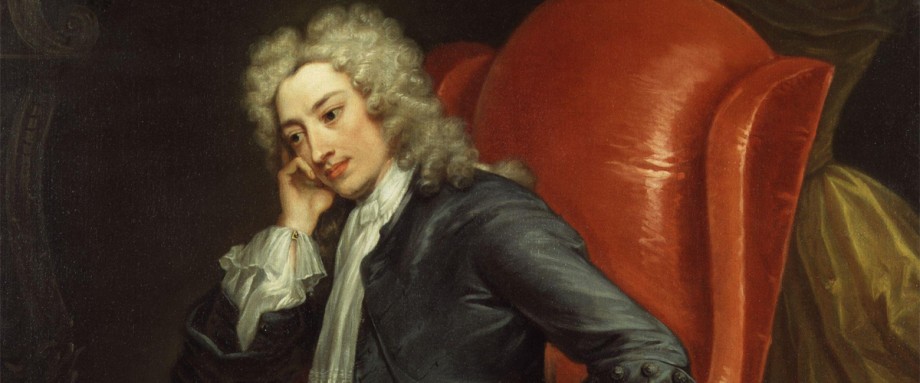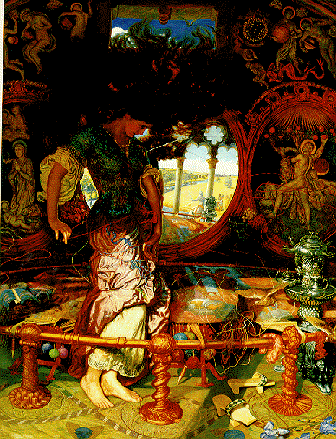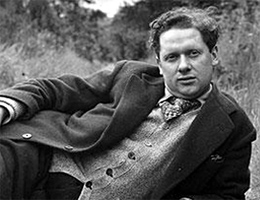This poem analysis of Alfred Lord Tennyson’s ‘Guinevere’ is divided into three parts – context, rhyme scheme and poetic style, and deeper meaning.
Context: The first part of the poem explanation focuses on the context in which ‘Guinevere’ was published. It was published in 1859, along with ‘Enid’, ‘Vivien’ and ‘Elaine’, as part of the first set of poems to be published from the twelve-poem cycle by Tennyson entitled The Idylls of the King. The ‘King’ referred to in this title is King Arthur, and the whole cycle consists of retellings of Arthurian legend. ‘Guinevere’, being the story of King Arthur’s wife, forms an important part of The Idylls of the King and should be analyzed keeping that in mind at all times.
Rhyme Scheme and Poetic Style: All the poems in The Idylls of the King are written in blank verse, and ‘Guinevere’ is no exception to this general tendency. However, the absence of end rhymes does not in any way diminish the greatness of Tennyson’s poetic craft. Many of the sentences span more than one line of the poem, and that is what makes it a narrative poem. It also makes the poem a little difficult to read aloud, but conveys the story it wishes to tell in minute details.
In the middle of the poem, the novice sings a song she has been taught by the nuns at the convent. This song is included within quotes in the body of the poem itself. It consists of four stanzas, each made of three lines. However, this song blends effortlessly into the fabric of Tennyson’s poem, and can be read without any interruption in the reader’s mind along with the rest of the poem’s content. This shows that the poetic style adopted by Tennyson in this poem is flexible and versatile.
Deeper Meaning: The Idylls of the King is often read as an allegory of Victorian society, and this poem explanation would be incomplete if that interpretation is left unexplored. The Idylls of the King was written following the model of Arthurian legend in Sir Thomas Malory’s Le Morte d’Arthur. However, Tennyson did make substantial changes and additions to Malory’s version. The most obvious change is apparent in ‘Guinevere’. In Malory Queen Guinevere is sentenced to be burnt at the stake but is rescued by Lancelot; in the Idylls of the King, she flees to a convent, is forgiven by Arthur, repents, and serves in the convent until she dies. But more importantly, Tennyson explicitly connects the infidelity of Guinevere to the decline of society. For him, King Arthur is the embodiment of all good values, and Guinevere of all the ills of Victorian society. Spenser, too, had connected each knight with a particular virtue, and King Arthur himself with the supreme virtue of magnanimity in his Faerie Queene. Hence, Tennyson’s premise was not unprecedented. However, its aptness for his time is what made it remarkable. In fact, it was the degradation of Tennyson’s contemporary time that made him turn to the so-called golden age of English history, the time of King Arthur and the Knights of the Round Table, for an allegory of the ideal society that he would like to see.
Another angle also needs to be examined to come to a fuller appreciation of Tennyson’s ideology behind making the change to the climax of ‘Guinevere’ from Malory’s original version. The Victorian age was a prudish age, in which women’s place was thought to be in confinement within the domestic sphere. Women were expected to be ‘angel(s) in the house’. Moreover, women’s chastity was seen to be a measurement of their worth and value in society. In an age such as this, Guinevere’s infidelity, and the consequent loss of her chastity and moral worth is emphasized above all else by Tennyson. Tennyson was a keen observer of his time, and perhaps his intention was to ridicule this kind of attitude towards women in his contemporaries. It is then fitting that a supposedly disgraced woman finds acceptance in the house of God, and ultimately earns the respect of the nuns in the convent. No sin is thus beyond redemption, and no woman ought to be measured by her sexual actions, Tennyson seems to say.
Dear Readers- If this summary/analysis has helped you, kindly take a little effort to like or +1 this post or both. Make sure you like Beamingnotes Facebook page and subscribe to our newsletter so that we can keep in touch. We’ll keep informing you about stuffs that are really interesting, worth knowing and adds importance to you.
Some online learning platforms provide certifications, while others are designed to simply grow your skills in your personal and professional life. Including Masterclass and Coursera, here are our recommendations for the best online learning platforms you can sign up for today.
The 7 Best Online Learning Platforms of 2022
- Best Overall: Coursera
- Best for Niche Topics: Udemy
- Best for Creative Fields: Skillshare
- Best for Celebrity Lessons: MasterClass
- Best for STEM: EdX
- Best for Career Building: Udacity
- Best for Data Learning: Pluralsight















